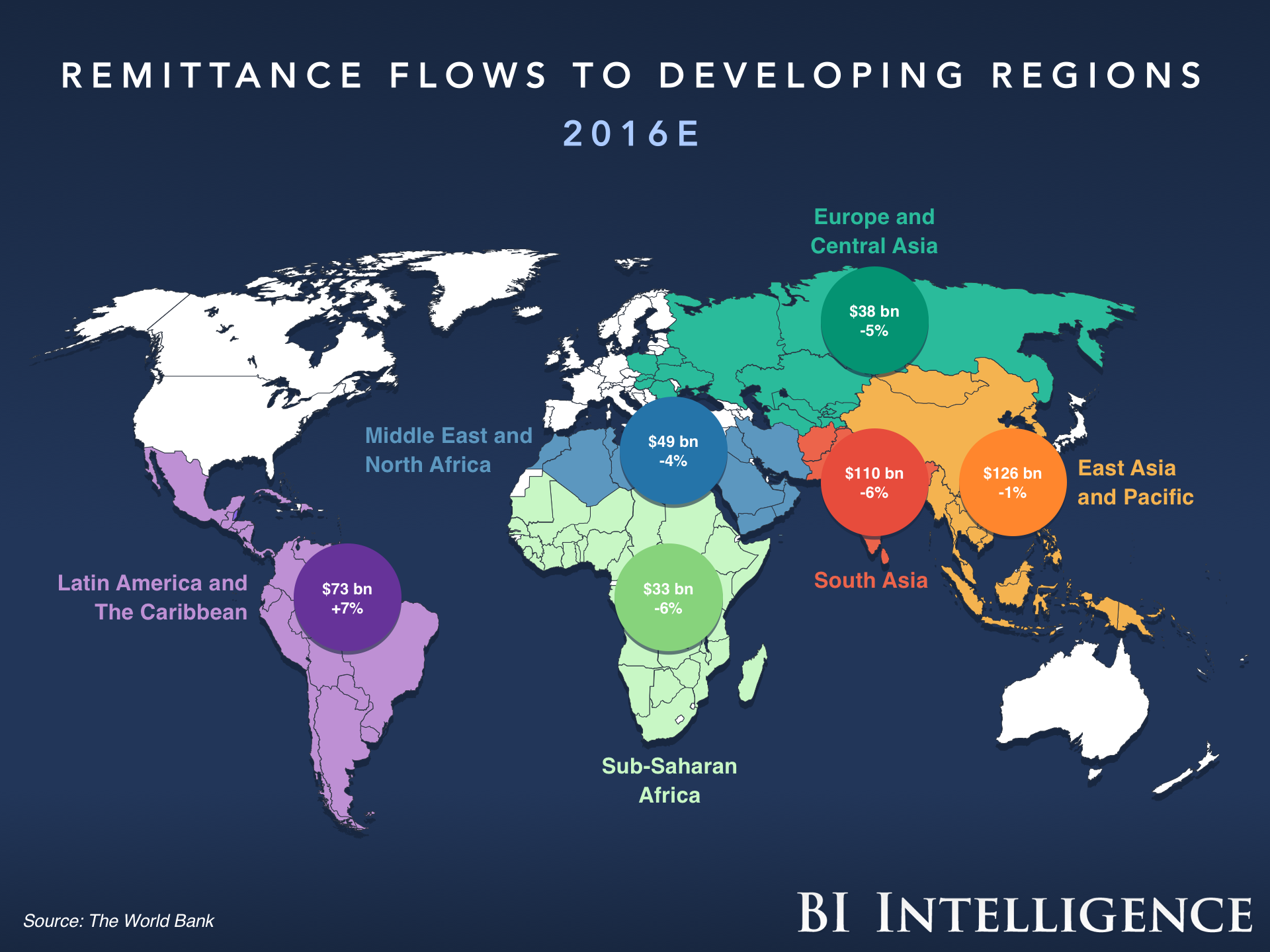 BII
BII
However, this pales in comparison to what the future holds for the sector, as globalization creates greater distance between families and digital tools promise to make transferring funds both easier and more efficient.
This evolution is being accelerated by a number of factors, including several wars leading to the displacement of millions, weather-related disasters resulting in the need for financial relief, a massive workforce moving to stronger economies, and increasing reliance on consumer technology, like smartphones.
Digital first remittance firms are leveraging all of these factors to challenge legacy players that have dominated the industry. These firms are able to accomplish this by competing with the likes of Western Union and MoneyGram on fees and usability, and capitalizing on the way people’s expectations have changed with the advent of digital and mobile channels.
In this report, BI Intelligence analyzes the global remittance market as it currently stands by examining how digital challengers are changing the industry and what legacy players are doing to hold them off. The report also discusses what the future may hold as a result of the potential MoneyGram acquisition, which could completely disrupt the traditional remittance model.
Here are some of the key takeaways from the report:
- The global remittance industry is massive and yet still growing — remittances are expected to reach $615 billion by 2018 up from $575 billion in 2016, according to the World Bank.
- Digital-first challengers have entered the remittance industry in force — Remitly processed $2 billion in transfers in 2016, which is essentially double its annualized volume in the previous year, WorldRemit now processes over 500 thousand transactions a month, and Transferwise now transfers over £800 million ($1 billion) a month.
- Meanwhile, legacy firms have not stood idly by — in 2016, Western Union got 8% of its consumer-to-consumer transfer revenue via its digital channel, up from 5% in 2014.
- A major catalyst for evolution in the industry is likely to come in 2017 with the potential acquisition of MoneyGram.In May, Ant Financial, owner of Chinese payment platform Alipay, agreed to buy MoneyGram for $1.2 billion in the firm’s first deal with a publicly listed US company.
In full, the report:
- Quantifies how large the remittance market currently is.
- Discusses what some of the barriers to growth have been for the remittance industry in recent years.
- Identifies what factors are going to lead to continued growth going forward.
- Considers ways digital-first startups have begun to disrupt traditional remittance companies and bring down fees.
- Breaks down what legacy firms are doing to hold off these challengers, while also evolving with the changing technological trends occurring globally.
- Explores what firms in the industry will have to do going forward in order to avoid being outperformed in an industry that is becoming increasingly saturated.
To get the full report, subscribe to an ALL-ACCESS Membership with BI Intelligence and gain immediate access to this report AND more than 250 other expertly researched deep-dive reports, subscriptions to all of our daily newsletters, and much more. >> Learn More Now
You can also purchase and download the report from our research store.
Learn more:
- Credit Card Industry and Market
- Mobile Payment Technologies
- Mobile Payments Industry
- Mobile Payment Market, Trends and Adoption
- Credit Card Processing Industry
- List of Credit Card Processing Companies
- List of Credit Card Processing Networks
- List of Payment Gateway Providers
- M-Commerce: Mobile Shopping Trends
- E-Commerce Payment Technologies and Trends













